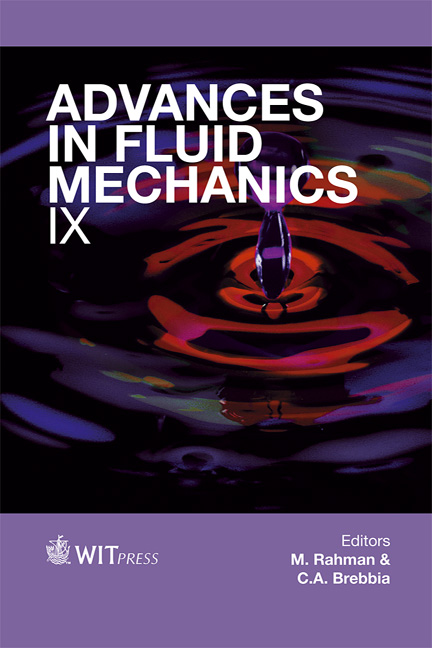Emulsion Compression And Coalescence Under Enhanced Gravity Studied With In-situ Microscopy
Price
Free (open access)
Transaction
Volume
74
Pages
12
Page Range
199 - 210
Published
2012
Size
1,872 kb
Paper DOI
10.2495/AFM120181
Copyright
WIT Press
Author(s)
T. Krebs, J. J. Slot, C. P. G. H. Schroen, H. W. M. Hoeijmakers & R. M. Boom
Abstract
We report the results of experiments and numerical calculations of compression and coalescence in a monodisperse oil-in-water emulsion upon centrifugation. A custom-built setup allows in-situ monitoring of a rotating bilayer of emulsion droplets using an optical microscope. The oil volume fraction in a compressed layer of oil droplets stabilized against coalescence was measured experimentally as a function of time for different radial accelerations. The sedimentation was simulated using CFD in order to test the applicability of the computationalmethod and the Ishii-Zuber drag law for very high dispersed phase volume fractions. Quantitative agreement of emulsion sedimentation as a function of time between the experiments and simulations is good at higher accelerations, but decreases with decreasing accelerations. Coalescence in a centrifuged emulsion, which was destabilized prior to centrifugation by adding sodium chloride, was also quantified. The growth of a pure oil phase on top of the droplet layer was measured as a function of time. From the growth rate, a characteristic time for droplet coalescence with the pure oil phase was deduced. The experimental method may serve as a tool to study the compression and coalescence kinetics of emulsions under enhanced gravity, which may be of use to assess emulsion stability for industrial applications. Possible improvements of the current experimental setup are also discussed. Keywords: emulsion, compression, coalescence, microscopy, droplet, CFD, drag law.
Keywords
emulsion, compression, coalescence, microscopy, droplet, CFD, drag law.





